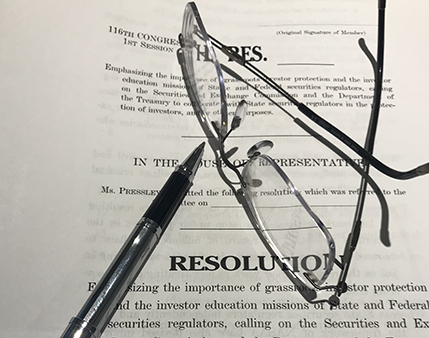Are you an informed investor?
EB-5 Fraud: Immigrant Investors Beware
What is the EB-5 Program?
In an effort to stimulate the U.S. economy through job creation and capital investment by foreign investors, the U.S. Congress in the early 1990s authorized the creation of a new type of immigrant visa known as the Employment-Based, Fifth Preference (EB-5) visa. Under the EB-5 program, foreign investors who meet certain eligibility requirements can apply for conditional resident alien status (i.e., a conditional “green card”) in the United States by investing in the American economy.
To be eligible for an EB-5 visa, a foreign citizen must invest at least $1 million (or $500,000 for certain targeted high unemployment or rural areas) in a commercial enterprise that within two years creates at least 10 new full-time jobs or preserves at least 10 jobs in a pre-existing, troubled business. After two years, assuming the investment has resulted in the creation or preservation of at least 10 jobs, the immigrant investor may apply to become a lawful permanent resident – and, eventually, may apply for potential U.S. citizenship. (For specific details about the EB-5 program and eligibility requirements, visit uscis.gov/eb-5.)
An immigrant investor could invest the funds directly into a new or troubled business, or indirectly through a “regional center” approved for this purpose by the U.S. Citizenship and Immigration Services (USCIS). Most EB-5 visa applicants have chosen to invest through these regional centers. But while the USCIS approves each regional center, the specific investments offered by regional centers generally do not undergo review or approval by any federal or state regulatory agency.
The EB-5 program has resulted in many new business enterprises and the renewal and preservation of previously troubled businesses. Unfortunately, fraudsters have also preyed upon unsuspecting EB-5 investors through the use of illegitimate businesses or sham regional centers.
EB-5 Misuse
The EB-5 program has increased in popularity in recent years and with it has come increased allegations of fraud. Below are two recent examples of alleged fraudulent behavior in the EB-5 industry:
- In April 2016, state officials in Vermont and the Securities and Exchange Commission filed similar civil actions alleging investor fraud dating back to 2008 at EB-5 development projects run by two men. The complaints allege that the men misused more than $200 million of investor funds intended for EB-5 development projects in Vermont, including a ski resort and a biomedical research facility. The cases also allege that one of the men misappropriated $50 million of investor funds for his own personal use, including the purchase of a luxurious Manhattan apartment and the payment of personal income taxes.
- In June 2016, the Securities and Exchange Commission announced fraud charges and an asset freeze against a husband and wife accused of misusing money they raised from investors to build and operate a cancer treatment center to help oncology patients in Southern California. The SEC said the pair raised $27 million for the cancer treatment center from 50 investors in China through the EB-5 immigrant investor program. The SEC said there has been no construction at the proposed site after more than 18 months of collecting investments. Of the money raised, $11 million was transferred to three firms in China and another $7 million was diverted to the couple’s personal accounts.
How Immigrant Investors Seeking EB-5 Visas Can Protect Themselves
Foreign investors interested in participating in EB-5 investments should thoroughly research any potential EB-5 investment, particularly one in which the individual is not personally involved. If an investor is considering investing through a regional center, the investor should conduct due diligence on the claimed investment opportunity as well as the regional center itself. For example, fraudsters may represent that they are working through USCIS-approved regional centers when, in reality, they have neither applied for USCIS approval (or approval is merely pending). Furthermore, investors should monitor the uses of any funds to ensure funds are not directed towards expenses that do not meet EB-5 requirements, such as promoters fees, administrative fees, or (of course) a con artist’s own pocket. The following are additional tips on how immigrant investors can protect themselves.
Investigate the Investment Promoter and Regional Center
- EB-5 investments, even those offered through USCIS-approved regional centers, generally are not reviewed or approved by any federal or state regulatory agency. Nonetheless, potential investors should check with the appropriate regulatory authorities for any information about the potential investment or promoter.
- Do not invest through a regional center that has not been approved by USCIS. A list of approved regional centers is available on the USCIS website, uscis.gov. (USCIS’s website also identifies regional centers that have had their approvals withdrawn.)
- USCIS approval should serve as a starting point. Investors should conduct further due diligence on the regional center and the individuals or entities standing behind it.
Always Get it in Writing
- The sponsor of an investment should have a business plan and offering documents, such as a private placement memorandum, outlining the proposed terms of the investment. Do not invest unless you receive such information. Furthermore, conduct your own analysis of the investment opportunity. Review and compare any investment materials to information in USCIS filings and other written or verbal statements from the issuer or its promoter. Any inconsistencies should be treated as a red flag.
How are the Sponsors/Developers Paid?
- Be comfortable that you understand how the sponsors/developers of an investment opportunity will be compensated, particularly if the sponsor/developer is not itself investing in the opportunity (i.e., has no “skin in the game”).
- Understand how the sponsors/developers are incentivized. Are the sponsors/developers of a regional center investing their own money into the projects they are managing? Absence of developers’ personal investments could mean their financial incentives are not linked to a project’s ultimate success and profitability.
- What is the structure of the investment and any affiliates? If there are layers of entities managed by the same individuals, there may be conflicts of interest that should be disclosed and evaluated. Don’t get caught in a shell game.
- Compare the answers you receive to information contained in the offering materials; any inconsistencies should be treated as a red flag.
Investigate the Claims and Independently Verify Information
- Many EB-5 investments help finance real estate developments. Real estate developments require permits and approvals from appropriate zoning or planning authorities. Contact these agencies and obtain information or records to verify representations that permits or approvals have been received.
- In addition, if the project involves the sale of land, inquire whether an independent appraisal has been conducted and request a copy. Additionally, check local property tax assessments for how property has been valued and whether that value reasonably supports the investment opportunity.
Know Your Risk Tolerance and Look for Classic Warning Signs
- Most immigrant investors seeking to take advantage of the EB-5 program presumably do so principally because of the potential path to legal U.S. residency and not because of the potential investment returns on their EB-5 investment. What level of risk are you exposed to? How is your investment protected, if at all?
- No investment promoter should ever promise a visa or permanent residency in exchange for an EB-5 investment. Investment promoters have no ability to make such promises. The EB-5 program does not guarantee a visa will be issued, or that permanent residency will result; EB-5 only provides an avenue for such eligibility.
- Claims of guaranteed returns or low/no investment risk are classic red flags. Every investment involves some degree of risk, and EB-5 investments are usually far from risk-free. If it sounds too good to be true, it probably is.
The Bottom Line
 Before making any decisions with your money, ask questions, do your homework and contact your state or provincial securities regulator. Contact information is available here.
Before making any decisions with your money, ask questions, do your homework and contact your state or provincial securities regulator. Contact information is available here.
Posted: August 2016










